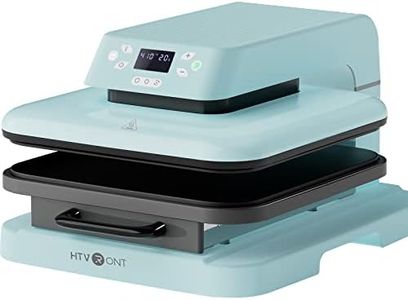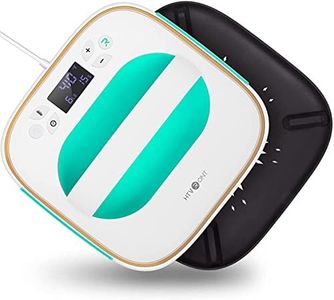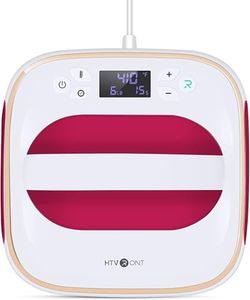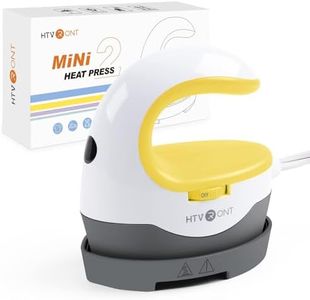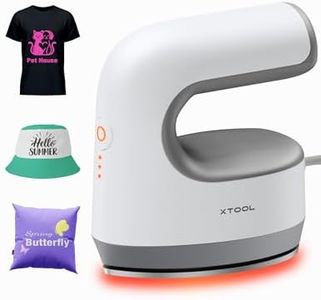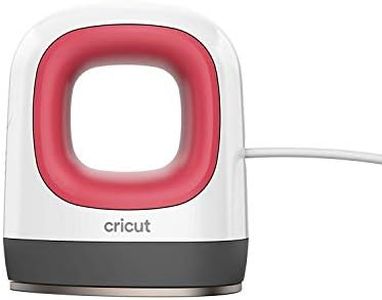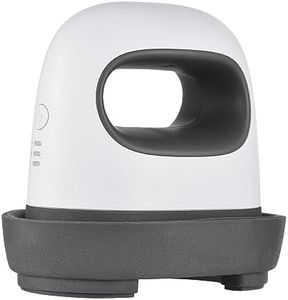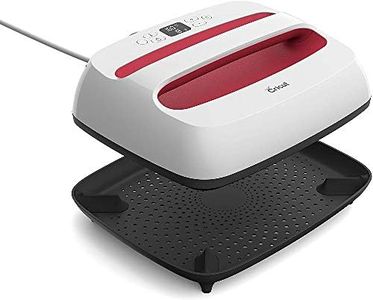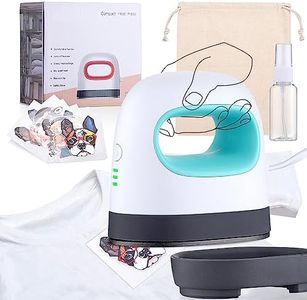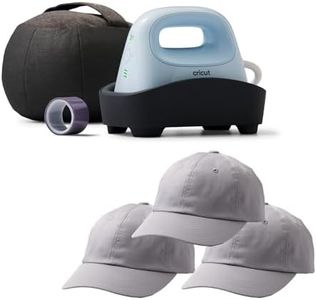We Use CookiesWe use cookies to enhance the security, performance,
functionality and for analytical and promotional activities. By continuing to browse this site you
are agreeing to our privacy policy
10 Best Heat Press Machine For Beginners
From leading brands and best sellers available on the web.Buying Guide for the Best Heat Press Machine For Beginners
When choosing a heat press machine, especially as a beginner, it's important to understand which features and specifications will make your projects easier, faster, and more successful. A heat press uses heat and pressure to transfer designs onto materials like t-shirts, mugs, or hats. Picking the right machine can mean the difference between frustration and fun, so focus on specs that match the size of your typical projects, ensure ease of use, and offer safety features. Remember, the best heat press is the one that fits your specific needs, workspace, and learning style.Platen SizeThe platen is the flat surface of a heat press where you place your materials. Its size determines the maximum area you can print on at one time. Small platens (around 9x12 inches) are great for small designs, children’s clothing, or accessories and take up less space—perfect for beginners with limited room. Medium sizes like 12x15 or 15x15 inches offer more versatility for adult t-shirts and larger items. Bigger platens (16x20 inches or more) handle large designs and bulkier items like hoodies. Choose a platen size based on the kinds of projects you plan to do most often; for general beginners, a medium-size platen is often most practical.
Temperature Range and ConsistencyThe temperature range tells you how hot the press can get, and consistency means it maintains that heat evenly. Some specialty transfers need high temperatures, but most beginner projects work well with machines that reach up to about 400°F. If you mostly do basic t-shirt transfers or sublimation, you won't need the highest settings. Even heat across the platen ensures your design adheres properly without cold spots; look for reviews or features mentioning even heating, since patchy temperature can ruin a project.
Pressure AdjustmentAdjustable pressure lets you change how hard the machine presses down on your item. Too much or too little pressure can affect how well designs stick or how materials look after pressing. Machines usually have simple knobs or levers to control this. Beginners benefit from presses that make it easy to adjust and clearly feel the difference. If you’re planning to work with different materials (think t-shirts, hoodies, tote bags), having straightforward pressure adjustment will help you experiment and get better results.
Control Panel (Manual vs. Digital Controls)The control panel is how you set the time and temperature. Manual dials are simple but can be less precise, while digital controls offer exact settings and timers. Digital panels are generally more user-friendly and help reduce guesswork—a major plus for beginners. Go for a machine with clear digital displays and straightforward buttons so you won’t waste time figuring out how to set basic requirements.
Opening Mechanism (Clamshell, Swing-Away, Draw)How the heat press opens and closes affects both safety and ease of use. Clamshell presses hinge open like a book and are compact—ideal for small spaces but may offer less access to the platen. Swing-away presses lift and swing the heated plate to the side, which provides more workspace and reduces the risk of burns. Draw presses let you pull the lower plate out toward you for loading. Beginners often like swing-away models for their safety and accessibility, but if space is tight, clamshell types may be the practical choice.
Safety FeaturesSafety is critical since heat presses get extremely hot. Look for features like automatic shutoff, insulated handles, and stable bases. These will reduce the risk of accidentally burning yourself or causing a fire if you forget to turn the machine off. For those new to heat presses, extra safety features provide important peace of mind as you learn.

